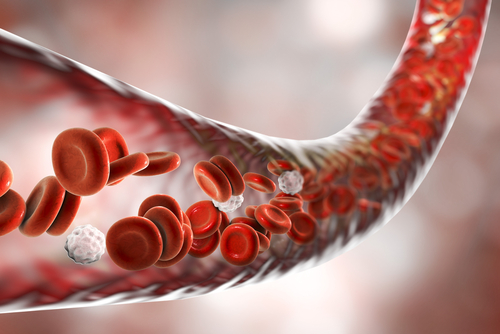Researchers suggest that targeting molecules involved in the intricate process of blood vessel formation may help improve the diagnosis and treatment of endometriosis.
The endometrium is known to experience highly dynamic changes due to fluctuations in hormone levels and the menstrual cycle. These changes are associated with the formation and maturation of new blood vessels.
Endometriosis is characterized by the growth of endometrium tissue outside the uterus, which commonly affects the pelvic cavity, the ovaries, and the rectovaginal septum. Endometrial lesions are also associated with the formation of new blood vessels, a process that is regulated by female sex hormones.
In a review study titled, “Basic mechanisms of vascularization in endometriosis and their clinical implications,” published at Human Reproduction Update, researchers at Saarland University, in Germany, examined the molecular and regulatory mechanisms of blood vessel formation and the implications for diagnosing and treating endometriosis.
Blood vessel formation is a major hallmark in the development of endometriosis, which involves three different processes known as angiogenesis, vasculogenesis, and inosculation.
Angiogenesis is defined as the formation of new blood vessels from pre-existing ones. Vasculogenesis is a process by which blood vessels are formed from scratch with progenitor cells. Inosculation is defined as the merging of individual blood vessels or entire microvascular networks with each other.
“Targeting these processes offers the possibility to develop novel strategies for the future diagnosis and therapy of endometriosis,” the researchers stated.
All of these mechanisms are regulated by a complex network of signaling molecules and hormones, which can lead to the development of new blood vessels and support the progression of endometriotic lesions.
Evaluating the levels of these different biomarkers may help diagnose and classify endometriosis. The biomarkers also could help evaluate the effectiveness of potential therapeutic approaches for endometriosis.
To date, none of the tested molecules involved in vascularization processes have shown to be sensitive or specific enough to accurately determine the presence and stage of endometriosis lesions. Still, researchers suggest that growth factors and circulating endothelial progenitor cells could hold potential as biomarkers of the disease.
Efficient therapies for endometriosis must overcome the mixed nature of the disease, with different lesions showing markedly different blood vessel formation activity and microvascular network composition.
Recent studies have shown that targeting blood vessel in endometriotic lesions with anti-angiogenic compounds and vascular-disrupting agents may hold therapeutic potential.
Researchers believe that to achieve effective therapeutic strategies, “it will be necessary to identify novel compounds which selectively target the vascularization of endometriotic lesions without inducing severe side effects and affecting fertility or pregnancy.”
These new strategies “may offer more effective and satisfactory diagnostic and therapeutic solutions for patients suffering from this debilitating disease,” the researchers said. Progress in this field indicates that effective therapies without severe side effects may be in the near future, they added.

